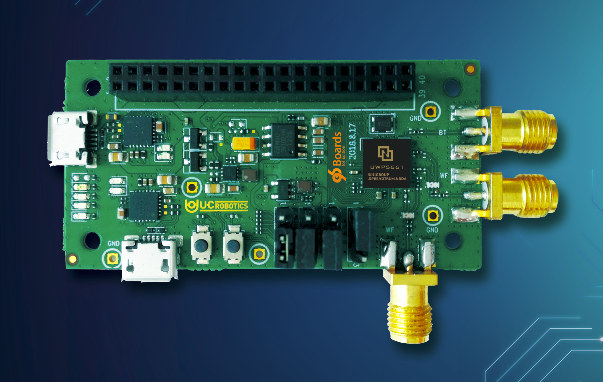If you ever wanted to start a new IoT project with WiFi and Bluetooth connectivity, you’d like think about using Espressif ESP32 WiSoC that supports single band 802.11 b/g/n WiFi (WiFi 4) and Bluetooth 4.2 LE thanks to great community and software support on top of the ultra low cost of the solution. But in case your require 802.11ac (WiFI 5) – yes, I’m trying hard to get used to the new WiFi naming scheme for consumers -, or Bluetooth 5, Espressif Systems does not offer such solution yet.
Instead you may consider UniSoC UWP5661 Arm Cortex-M4 WiSoC with WiFi 5 & Bluetooth 5 connectivity that will be found in the soon-to-be-launched UcRobotics IVY5661 96Boards IoT Edition board.
I could not find lots of information about UWP5661 chip tself, so let’s jump directly to IVY5661 board specifications:
- SoC – UniSoC UWP5661 dual core Arm Cortex-M4 microcontroller @ 416 MHz manufactured with 28nm process
- Storage – 32Mbit NOR flash
- Connectivity (built-in SoC) – Dual band 802.11ac 2×2 MIMO WiFi, Bluetooth 5
- USB – 2x Micro USB
- Expansion Interface – 96boards LS (Low Speed) connector with UART, I2C, SPI, I2S, GPIO
- Misc – 4x user LED, 2x reset and user button
- Power Supply – 5V via Micro USB port
- Dimensions – 60 x 30 mm (96Boards IoT edition form factor)
The board runs Zephyr OS (see commits), and documentation should eventually become available in the product page on 96Boards website, now mostly filled with “coming soon” since the board has yet to launch.
As a side note, UniSoC is born out of the merger between Spreadtrum and RDA Micro, and has become the third company worldwide in terms of mobile chip sales behind Qualcomm and Mediatek, as I found in Charbax’ video about IVY5661 board shot at the most recent Linaro Connect.
We still don’t know pricing and availability information, except a “good price” is expected. I’d wish for a $10 board, but most 96Boards are not known for their aggressive pricing so we’ll have to wait and see.

Jean-Luc started CNX Software in 2010 as a part-time endeavor, before quitting his job as a software engineering manager, and starting to write daily news, and reviews full time later in 2011.
Support CNX Software! Donate via cryptocurrencies, become a Patron on Patreon, or purchase goods on Amazon or Aliexpress





